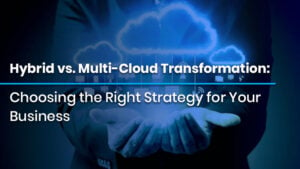
How to Strengthen Security Using CIS Controls and Posture Analysis
How to Strengthen Security Using CIS Controls and Posture Analysis Introduction In the fast-paced and ever-evolving world of cybersecurity, defending digital infrastructure goes far
🔥Premium Monthly Plan – Only $11.99!🔥Hurry! This exclusive deal won’t last long. 👉 Subscribe Now!

How to Strengthen Security Using CIS Controls and Posture Analysis Introduction In the fast-paced and ever-evolving world of cybersecurity, defending digital infrastructure goes far

How to Prepare for the AWS Data Engineer Exam Introduction With the world becoming increasingly data-driven, organizations are depending on cloud-based systems to store, process,

Hybrid vs. Multi-Cloud Transformation: Choosing the Right Strategy for Your Business Introduction In the digital-first economy of today, cloud transformation is no longer a
Table of Contents
Malware that can cause you high security risks, We have summed up their prevention below.
Malicious software performs bad functions on the network and is referred to as Malware.
How does Malware get in?
Malware gets a profit from the vulnerabilities in the operating system or the vulnerabilities brought in by you, by clicking on the malicious links. A malware program is functioning initially before the malware inserts itself into the system.
Malware Types: Malware are of various kinds, some of them are as follows:

The virus is a ‘reproduce itself’ type of malware. Viruses don’t call for someone to click links or anything but instead demand to perform programs. Some viruses don’t induce issues, they are unseen but some are clear (provide pop-ups).
Viruses penetrate into the system in various ways. Some viruses are added to an application. So, we run the virus when we run that application. Viruses may run as a script, some may be the part of boot sector or macros.
How to prevent it?

It can travel without human act or invasion inside the network or computer. It spread and take control of the system rapidly. A well-recognized virus that can be cleaned through a next-generation intrusion prevention system or firewall.
How to prevent it?

It captures the user data and encrypts it and in return, demands money. Ransomware drives the system or computer inoperable. A fake note is presented on the screen with the message that police have sealed the computer. That may be legitimate but ransomware may come out in this form. In case it is ransomware, you need to take your system to a security expert so that he can dispose of ransomware and secure your files and data from damage.
How to prevent it?

This malware encrypts all the data or files except operating system and provokes the note that the data have been encrypted and you demand to track some method through which the victim can deliver money to the threat actor for regaining access to the files or to have the decryption keys. The system of payment is not identifiable and also you can’t decrypt the data files because of an effective encryption method i.e. Public Key Cryptography. It can also detect the online backup data and encrypt them too.
How to prevent it?

It ruins the system by covering its real functionality, this means that it imitates something other than malware. It is easy for the malware to get inside of the system. And once they get inside, they open gates for other malware too and that open gate is referred to as a back door. Remote Access Trojan commonly indicated as Remote Administrative Tools is a division of Trojan horse malware. It provides administrative entry and set up the back door.
How to prevent it?

It couples with another software to generate malware and located mostly in a kernel. A subtle type of malware that allows threat actor to have an administrative entry without a user’s awareness. And once the entry is granted to the threat actor they can perform whatever they need to like changing system setting, data accessing, etc.
How to prevent it?

Keylogger saves the keystrokes that the user enter and then prepare a file and deliver it to the threat actor who craves to ruin our system and need your personal information and data. It also saves information other than keystrokes.
How to prevent it?

A malicious software that examines the user action like the website they visit and wait for their input in order to steal their personal information.
It poses as a security software to get into the system, which in actual is a fake or it may be installed along with another software. Once it is installed, it starts watching the user work to pick up the browsing record and utilize it for their own benefit like when you log in to the bank account they will follow you and through the seized information they will be able to log in to your account and can freely move the money into another account.
How to prevent it?

A kind of malicious software that once installed on the system, it starts showing advertisement and popping up messages and through this, the threat actors make money because they know it is one of the finest ways to make money on the internet. The threat actor sometimes encapsulates the adware software inside some other application that people install normally and when they install that application, adware installed along with it.
How to prevent it?

A kind of malware that is also known as robot network (Group of robots that performs or focuses on the same task). A robot is present inside the network and does the tasks that are ordered to it and poison the system.
How to prevent it?

As the name hints, it is like a time bomb that waits for the appropriate moment for the action. When the bomb goes off, something overwhelming happens like deletion of data from the system. Recognition of this malware is complex because it is commonly installed by someone with administrative entry and further because a recognized anti-malware signature does not match it.
How to prevent it?
Reply us in the comment box and tell us what you think of this post.
© 2025 All rights reserved | Privacy Policy | Terms and Conditions | Sitemap | Cookie Policy




